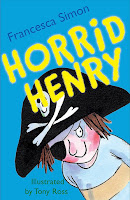UNIT 4 - MOTIVATION
1. TYPES OF MOTIVATION
- INTRINSIC motivation - inner interest in completing a task, in making the effort to achieve a goal and learn. Relies on internal, personal factors such as needs, interests, curiosity.
- EXTRINSIC motivation - external input/reward that makes you willing to do the effort of completing an activity or achieving a goal. Relies on external, environmental factors such as rewards and punishments that has very little to do with the task itself. It is limited in time.
2. MOTIVATION THROUGH ACTIVITIES
One or the other type might be developed depending on the chosen approach/methodology and the design of the activity:
- BEHAVIOURAL APPROACHES
- Source of Motivation: Extrinsic
- Important Influences: Reinforcers, rewards, incentives, and punishers.
- Reward – an attractive object or event is supplied as a consequence of a behaviour.
- Incentive – an object or event that encourages or discourages behaviour.
- HUMANISTIC APPROACHES
- Source of Motivation: Intrinsic
- Important Influences: Need for self-esteem, self-fulfilment, and self- determination.
- Humanistic interpretation – An approach to motivation that emphasises personal freedom, choice, self-determination, and which is taken into account for personal growth.
- Activities from this approach should allow students to choose - range of choice and freedom so they can decide which topics to work on.
- COGNITIVE APPROACHES
- Source of Motivation: Intrinsic
- Important Influences: Beliefs, attributions for success and failure, expectations.
2.1. Planning to motivate students
Selecting and designing tasks involves not only a sound understanding of the material to be taught but also matching the level of work to that of the students. It is also vital that the subject matter is appropriate for the individuals in the class.
Hence:
- Provide opportunities for students to reflect on and share their personal experiences and their feelings about the topic being studied (this reassures the students and allows the teacher an opportunity to plan appropriate tasks).
- Draw on what students already know and can do to stimulate their interest and imagination.
3. TASKS AND TEACHING
- Select tasks that are challenging and achievable.
- For effective learning to take place, learners need to understand what they are trying to achieve, and want to achieve it.
- Understanding and commitment follow when the students have some part in deciding goals and identifying criteria for assessment.
- These criteria should be discussed with the students, providing examples of how the criteria can be met and engaging the students in peer and self-assessment.
- Teaching styles. Children learn in different ways so when planning lessons, use a variety of strategies to cater for different learning styles.
4. FEEDBACK
- CORRECT FEEDBACK is essential. Not just giving feedback, but doing it right - the way in which a teacher gives feedback on a pupil’s work has an enormous impact on their motivation.
- There has been a great deal of research into the impact of feedback on children’s learning and one of the most important findings is that children only focus on marks and ignore the comments that accompany them.
- Therefore, if the teacher wants the pupil to improve learning s/he should:
- Pinpoint the learner’s strengths and advise how to develop them.
- Be clear and constructive aboutany weaknesses and how they might be addressed.
- Provide opportunities for learners to improve upon their work and with a clear understanding of what to do next. Adjust teaching to take account of the results of assessment -> positive feedback, ways of doing the activity in a different way.
So, in order to motivate students to learn effectively teachers must provide a safe and stimulating environment. Within this setting, the teacher must provide a curriculum which is relevant to them, takes into account their learning needs and builds on their prior knowledge and experience.
- At first…,
- Then, he discovered…
- Afterwards…
- Meanwhile…
- Finally…



Comentarios
Publicar un comentario